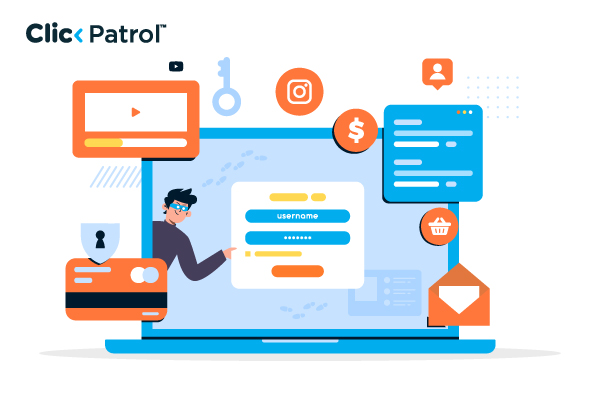
Why use third-party tracking URLs? Benefits, best tools, and how they improve your Ad campaigns
Abisola Tanzako | Jul 30, 2025

Table of Contents
- What are third-party tracking URLs?
- How do tracking URLs work?
- How third-party tracking URLs boost SEO
- Top reasons to use third-party tracking URLs for better ad insights
- Top 5 third-party tracking platforms 2025
- Third-party tracking URL best practices
- Common mistakes to avoid when using tracking URLs and how to correct them
- Future trends of third-party tracking URLs: Trends for SEO and marketing
- Why third-party tracking URLs are indispensable
- FAQs
Digital marketing continues to evolve, making data-driven decisions more important than ever (Chaffey & Ellis-Chadwick, 2022). Over 60% of digital marketers now use third-party tracking tools to gain more accurate campaign data.
Third-party tracking URLs have become a valuable tool for SEOs and marketers, helping businesses monitor user engagement, measure campaign performance, and adjust strategies based on real-time data.
Companies can use them effectively to improve SEO performance, manage backlinks, and optimize marketing efforts.
This guide explains what third-party tracking URLs are, how they work, their advantages, and how to choose the right provider.
What are third-party tracking URLs?
Third-party tracking URLs are customized web links developed with third-party tools (e.g., Google Analytics, Bitly, and Rebrandly) to track user activity when a user clicks on a link.
The URLs contain UTM parameters and tracking codes that register in-depth information about user behavior.
How do tracking URLs work?
When a tracking URL is clicked, the parameters passed capture some data, such as:
- Traffic source: From which source is the visitor coming (social media, search engine, email, etc.)?
- User location: Enables companies to understand their audience demographics.
- Device type: Indicates whether users access the site through mobile, desktop, or tablet devices.
- Click-through rates (CTR): Capture the effectiveness of the marketing campaigns.
- Conversion rates: Track the number of users engaging in a specific activity (e.g., buying, joining, etc.).
How third-party tracking URLs boost SEO
Here is why tracking URLs assists in getting better search engine rankings:
1. Improved backlink management: Backlinks (links to your site from other sites) are among the strongest ranking signals in SEO.
- Tracking URLs enables companies to monitor and track backlinks effectively.
- Monitor referral traffic: see which outside websites are referring traffic.
- Identify high-quality backlinks: Target authoritative websites that refer quality traffic.
- Enhance link-building strategies and foster relationships with high-quality sources.
Example: A brand that collaborates with influencers can utilize tracking URLs to see which influencer is referring the most website traffic and conversions, providing a more significant ROI for influencer collaborations.
2. Improved user engagement insights: User engagement metrics are critical to SEO performance. The longer users stay on a site, the higher it will rank on Google. Tracking URLs enables measurement of:
- Page time: Indicates which content is capturing users’ attention.
- Bounce rate: This shows if users are leaving a page too quickly.
- Navigation Flow: Illustrates how users navigate the site.
3. Correct traffic source attribution: Google prefers websites with pure, stable, high-quality traffic sources. Marketers can monitor URLs to determine which traffic sources generate the most traffic; thus, marketing spending is optimized accordingly. For example, a company promoting a new blog post on social media platforms, newsletters, and Google Ads can track URLs to see which source generates the most engaged readers.
Top reasons to use third-party tracking URLs for better ad insights
Aside from SEO, tracking URLs also provides several advantages to online marketing campaigns. Let us break down the key advantages:
1. Single data collection and reporting: Managing various marketing channels can become confusing. Third-party tracking URLs merge data from multiple platforms into a single reporting system, which is easy.
- Gathers data from social media, emails, paid ads, and website traffic in batches.
- Allows marketers to compare campaign performance side by side.
- Provides end-to-end visibility into marketing ROI.
2. Track campaign performance in real-time: With tracking URLs, firms can monitor campaign performance in real-time, allowing them to make instant adjustments to maximize outcomes.
Example: When a Black Friday campaign gets low CTR, firms can immediately adjust ad copy or targeting to improve engagement before the campaign ends.
3. Improved affiliate and influencer marketing: Affiliate programs depend on accurate tracking to remunerate partners fairly. Tracking URLs sends commissions to the appropriate affiliates and serves SEO by sharing link authority with referral sites.
- Tracks affiliate and influencer referrals.
- Record sales across each partnership.
- Optimizes top-performing partnerships.
Top 5 third-party tracking platforms 2025
The top 5 third-party tracking platforms include:
1. Google Analytics 4 (GA4)
Best for: Website and conversion tracking
Why it is great:
- Event-based tracking across platforms
- Seamless integration with Google Ads
- Predictive metrics and cross-device data
- Privacy-focused (GA4 is GDPR-ready)
- Ideal users: SEO professionals, content marketers, and eCommerce teams
2. Bitly
Best for: URL shortening with link analytics
Why it is great:
- Branded link creation
- Real-time click tracking
- Great for SMS, social, and influencer campaigns
- The platform operates best for social media marketers and brands while providing services to influencers as potential users.
3. Rebrandly
The complete function of tracking and the capability to create custom-branded links make Rebrandly the best choice for this application.
Why it is great:
- Through this platform, organizations can produce their own domain name short links.
- UTM builder integration
- The platform enables advertisers to follow their target audience through connected advertisement links.
- Ideal users: Agencies, large brands, content marketers
4. ClickMeter
Best for: Advanced link and conversion tracking
Why it is great:
- Affiliate and referral tracking
- Detailed reports with A/B testing
- Supports multiple traffic sources
- Ideal users: Affiliates, performance marketers, agencies
5. Voluum
Best for: Affiliate and performance marketing at scale
Why it is great:
- AI-based traffic distribution
- Real-time campaign optimization
- Anti-fraud click tracking
- Ideal users: Media buyers, affiliate marketers, large-scale advertisers
Third-party tracking URL best practices
To achieve maximum performance from tracking URLs, embrace the following best practices:
1. Employ reliable tracking tools: Choose trusted tools such as:
- Google Analytics (UTM tracking)
- Bitly (URL shortening & tracking)
- Rebrandly (custom-branded short URLs)
2. Comply with data privacy: Incorporating more privacy for users, keep tracking URLs GDPR, CCPA, and other regulations compliant. Always disclose data tracking practices.
3. Avoid overcomplicating URLs: While UTM tags are helpful, many parameters confuse URLs and deter individuals from clicking. Include only essential tracking parameters.
4. Monitor and optimize campaigns regularly: Monitor reports regularly and optimize campaigns for improved engagement, CTR, and conversions.
Common mistakes to avoid when using tracking URLs and how to correct them
Here are common mistakes to avoid when using tracking URLs and how to fix them
1. Overloading URLs with too many parameters
- Mistake: Adding excessive UTM parameters makes links long and messy.
- Fix: Stick to essential ones like utm_source, utm_medium, and utm_campaign for clarity and better tracking.
2. Skipping URL shorteners
- Mistake: Sharing long, unattractive URLs, especially on social platforms or emails.
- Fix: Use Bitly or Rebrandly to create clean, branded, and clickable links.
3. Neglecting regular link monitoring
- Mistake: Failing to track links and update them can result in expired or inaccurate data.
- Fix: Audit and update your URLs periodically using analytics tools to maintain accuracy and effectiveness.
4. Failing to align parameters with campaign goals
- Mistake: Using inconsistent or vague UTM tags that confuse reporting.
- Fix: Establish a standardized naming convention for UTM parameters across all campaigns to facilitate easier analysis.
Future trends of third-party tracking URLs: Trends for SEO and marketing
These are a few of the key trends that will determine their future:
- AI-driven personalization and analytics: AI will power dynamic URL personalization and advanced analytics, offering real-time insights, predicting user behavior, and tailoring content based on location, device, or actions.
- Privacy-focused tracking methods: With the growing prevalence of privacy laws and the decline of third-party cookies, tracking is expected to shift toward consent-based models, first-party data, and server-side solutions to ensure compliance and maintain user trust.
- Emergence of decentralized and transparent tracking: Blockchain technology will help improve data accuracy, eliminate fake clicks, and ensure transparent, secure attribution.
- Adaptation to evolving search and multi-device behavior: Tracking methods will expand to include voice and visual searches, enabling seamless cross-device attribution across platforms such as mobile apps, smart devices, and the metaverse.
Why third-party tracking URLs are indispensable
Third-party tracking URLs are crucial for SEO optimization, enhancing marketing performance, and optimizing ROI in today’s data-driven digital marketing landscape.
These URLs enable businesses to track user engagement, identify traffic sources, and refine their strategies for improved results.
Marketers can uncover more profound insights into user behavior and drive growth by embracing best practices, such as utilizing reliable tools, maintaining compliance, and optimizing campaigns.
Tracking URLs is a game-changer for paid advertising, backlinks, or influencer collaborations. Maximize your ad performance and explore third-party tracking platforms to improve your campaign ROI today.
FAQs
Q.1 Are tracking URLs bad for SEO?
No, if done correctly. Avoid using excessive tags and redirects when necessary to prevent duplicate content issues.
Q. 2 Do tracking URLs make websites slower?
Not significantly, but using fast, trustworthy tracking services to keep load times minimal is a good idea.
Q. 3 Are UTM parameters an adequate alternative for third-party tracking URLs?
UTM parameters work well with Google Analytics, but third-party tracking URLs provide additional information, such as fake click detection and real-time alerts.





